The salt farms of Bima
Salt making is a traditional enterprise in many cultures. Using the powerful heat of the sun, seawater is evaporated and concentrated until rock crystals are formed. Sea salt “farms” were fairly common when I was growing up in the 80s but modernity brings in the convenience of imported salt (especially Indian salt) that comes out cheaper. I would be hardpressed to find sea salt ponds in Cebu.
In my frequent travels, particularly in Indonesia, I still see that this saltpanning tradition is still strong. In Java, the biggest salt tracts are in Madura island.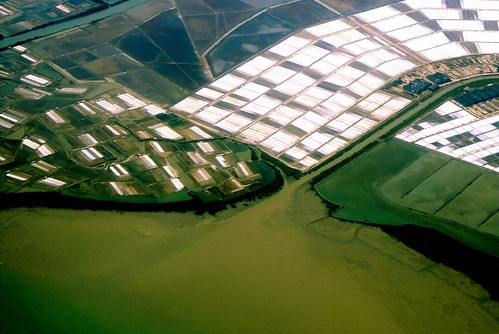
Canon EOS 350D Digital, 1/500s, f/8.0, 55mm, ISO 100
salt ponds, Madura island, East Java, Indonesia
Whenever I am in a plane I always watch with curiosity these salt ponds and they are all over the country. Most recently, just this last week, I flew to Bima in the island of Sumbawa and finally found the spare time to visit thriving salt ponds.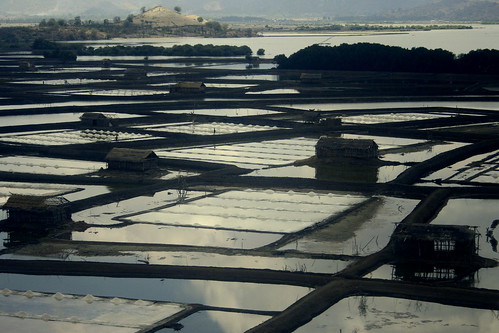
Canon EOS 350D Digital, 1/1000s, f/5.6, 55mm, ISO 200
Bima, the capital city of Nusa Tenggara Barat (NTB) province, is hot and salt farms dot the landscape at the bay, just where the airport is. The principle is well, simple. During the hot season, sea water is introduced into the plains by opening dikes during high tide. 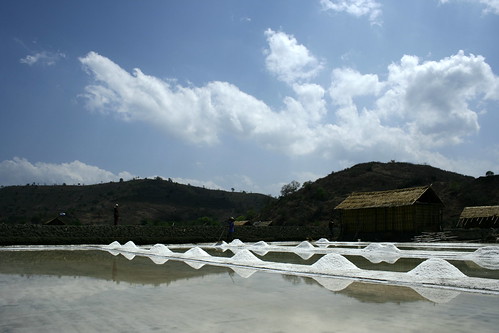
Canon EOS 350D Digital, 1/1000s, f/8.0, 18mm, ISO 100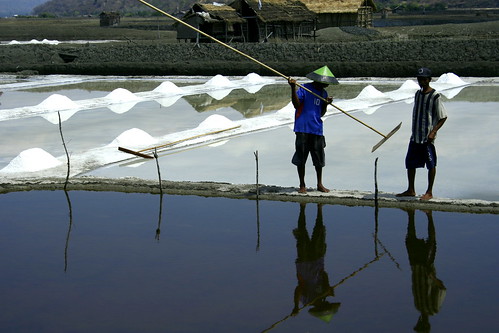
Canon EOS 350D Digital, 1/800s, f/8.0, 47mm, ISO 100
The salt water is fed into evaporation ponds made of compacted soil and separated by levees. Water can only take in so much salt so upon continued evaporation, it breaches “saturation point” which technically means that the solubility limit is reached. Salting out then begins. In saturated brine, salt would remain solid and would be panned in mounds and harvested. During the dry season, salt is collected at least once a week and could yield 2 tons per hectare.
Canon EOS 350D Digital, 1/1250s, f/5.6, 300mm, ISO 100
The salt ponds are typically maintained independently, some by cooperatives but often run, by families. In one pond just a few hundred meters from the airport, we chanced upon a man being assisted by his daughter who could be no more than 10 years old. It was Sunday so school was off. All throughout the time that I was around, she seemed to be thoroughly into her chores. Collecting salt cannot be all fun, especially under the heat of the biting sun, but she balanced the salt she collected on her head confidently, prancing barefoot across the pond, as if it were the most natural thing to enjoy.
Helping out the family never falls out of favor.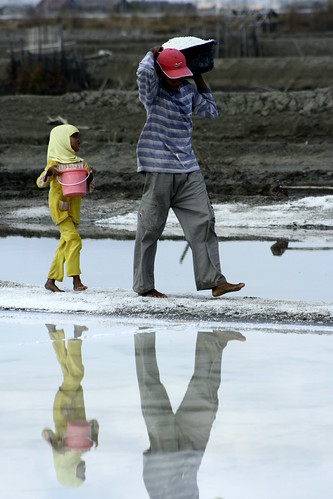
Canon EOS 350D Digital, 1/1250s, f/5.6, 180mm, ISO 200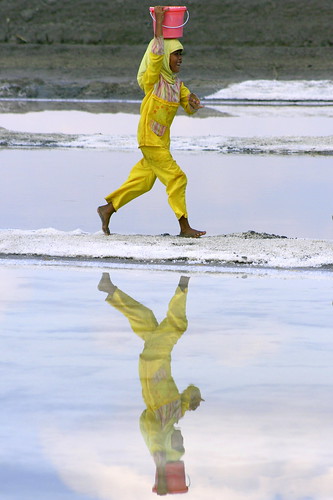
Canon EOS 350D Digital, 1/2500s, f/5.6, 155mm, ISO 200






4 comments:
Great blog! Its always interesting to see where it all comes from.
I bought some great pink hamalayan sea salt from http://www.sustainablesourcing.com/
michelle- thanks.
I grew up in a place with lots of salt ponds. They used to be common in Cebu but not anymore...
Good day! I am a chemistry teacher and an author of a chemistry textbook in the phils. I was searching the net about salt farms here in the Philippines and I came across your blog. I love your pictures! and how you describe the process of salt making. If it is okay with you that I would like to ask your permission If I can borrow one of your pics in this blog? I will give credit to you in the textbook, if ever the publishing team will approve of the pics,you can email me if its okay at hh29pp2000@yahoo.com. Hope for your response sir! All the Best... Hilda
Hilda- I'll email you. I'm a chemist too so I'd be glad to be of help.
Post a Comment